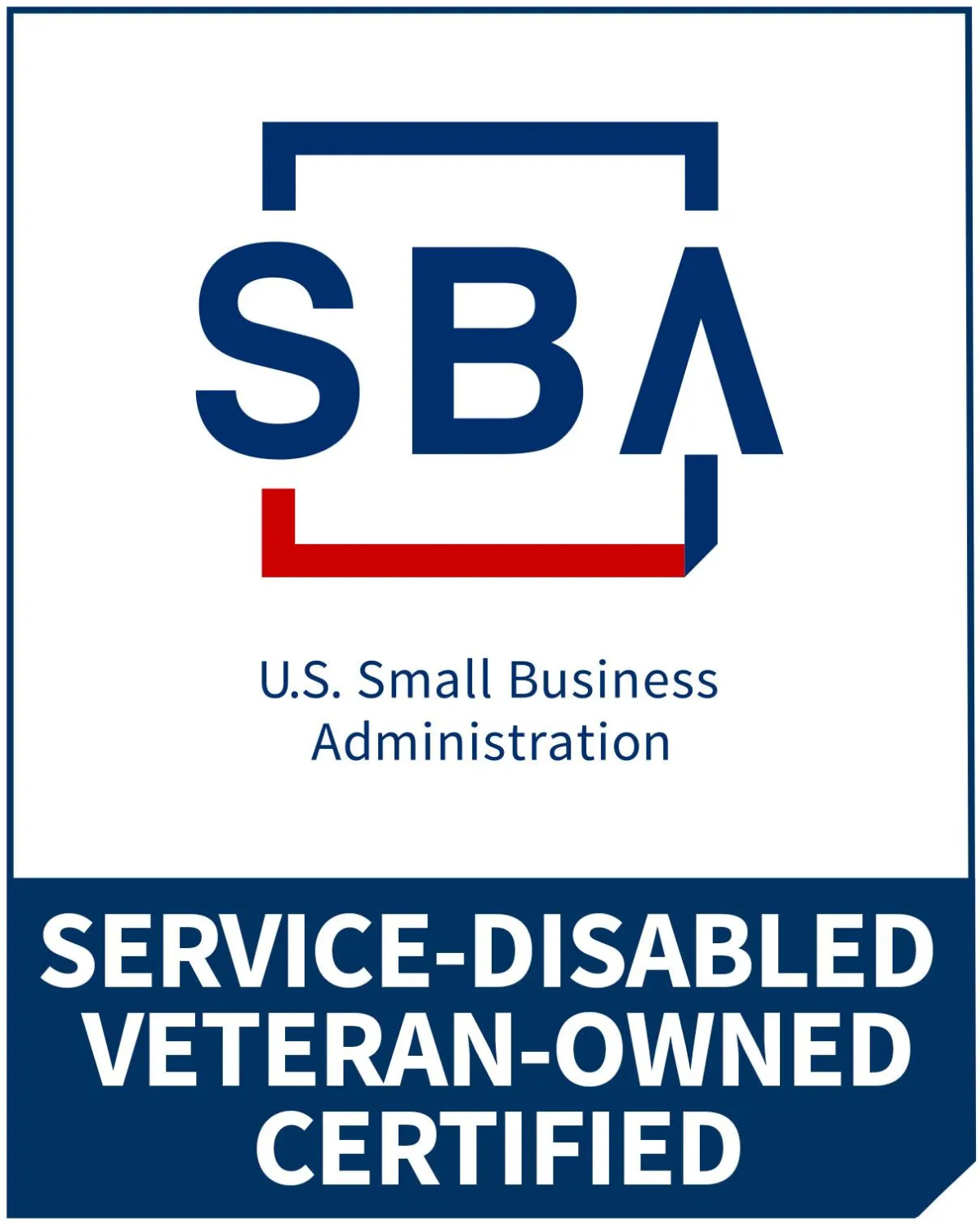TRAINING COURSES
COURSES FOR EVERYONE
Averting Violence

Situational Awareness and Threat Recognition
This course empowers individuals to enhance their safety by developing situational awareness and recognizing pre-attack behaviors across various settings. Whether navigating crowded public spaces, working in confined environments, or traveling alone, participants will learn how to identify potential threats, make informed decisions, and respond effectively to ensure their safety and the safety of others.
Develop Heightened Situational Awareness
Identify Pre-Attack Indicators and Behavioral Cues
Environmental Scanning and Threat Identification
Proactive Decision-Making in High-Risk Situations
Case Studies and Scenario-Based Exercises

Avoiding, Escaping, and Evading Violence
This course empowers individuals to enhance their safety by developing the ability to avoid, escape, and evade potentially violent situations. Participants will learn how to assess controlled and uncontrolled environments to determine the best options for avoiding, escaping, and evading threats of violence, whether in public or private spaces.
Threat Detection
Avoidance and Escape Tactics
Evasion Techniques and Procedures
Cover and Concealment
Case Studies and Scenario-Based Exercises
Situational Awareness and Threat Recognition
This course empowers individuals to enhance their safety by developing situational awareness and recognizing pre-attack behaviors across various settings. Whether navigating crowded public spaces, working in confined environments, or traveling alone, participants will learn how to identify potential threats, make informed decisions, and respond effectively to ensure their safety and the safety of others.
Develop Heightened Situational Awareness
Identify Pre-Attack Indicators and Behavioral Cues
Environmental Scanning and Threat Identification
Proactive Decision-Making in High-Risk Situations
Case Studies and Scenario-Based Exercises


Avoiding, Escaping, and Evading Violence
This course empowers individuals to enhance their safety by developing the ability to avoid, escape, and evade potentially violent situations. Participants will learn how to assess controlled and uncontrolled environments to determine the best options for avoiding, escaping, and evading threats of violence, whether in public or private spaces.
Threat Detection
Avoidance and Escape Tactics
Evasion Techniques and Procedures
Cover and Concealment
Case Studies and Scenario-Based Exercises
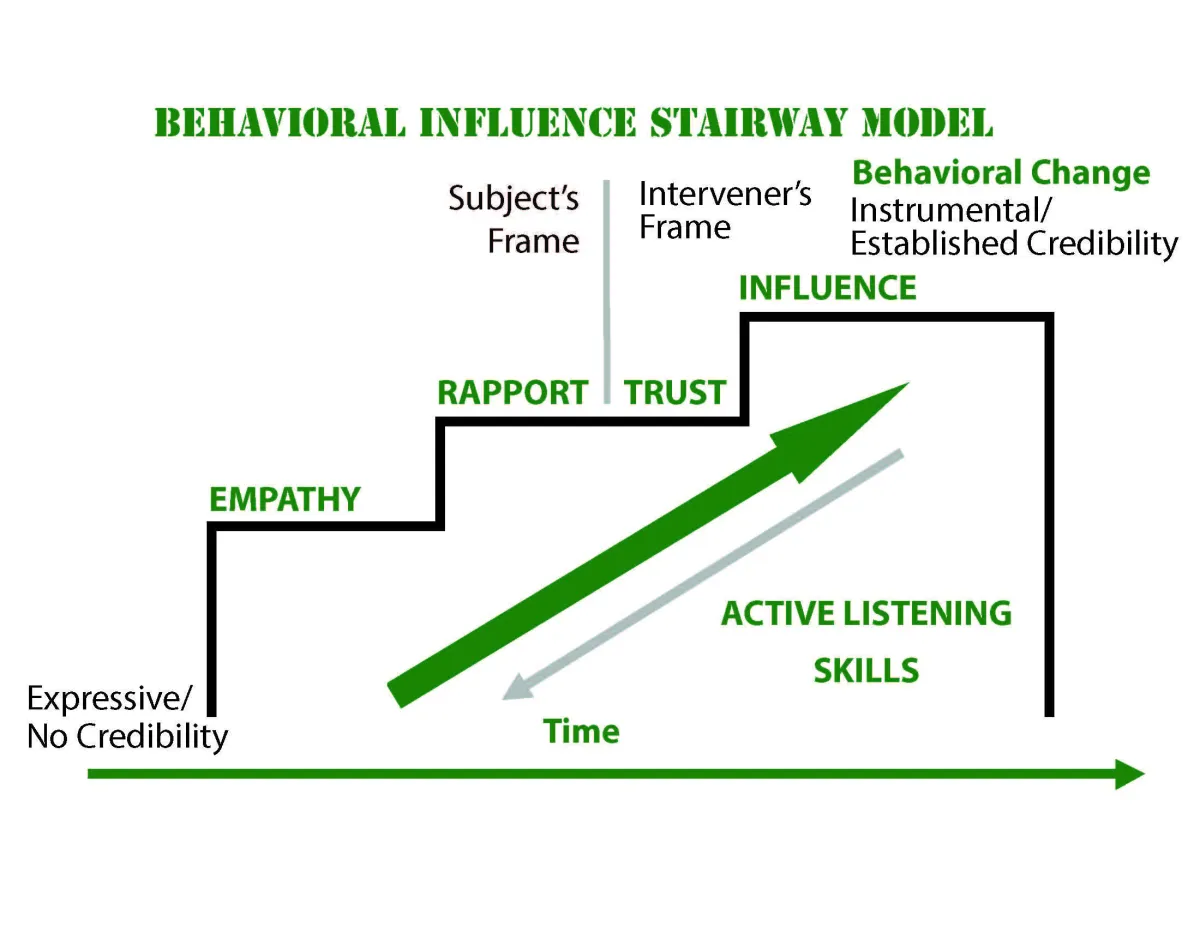
De-Escalating and Defusing Violence
This course provides practical techniques, tactics, and strategies for de-escalating conflicts and defusing potentially violent situations. Participants will learn to recognize early signs of aggression, use effective communication to reduce tensions, and maintain personal safety while managing challenging interactions.
Psychology of Aggression and Conflict Escalation
Assessing and Managing Volatile and Emotional Situations
Active Listening, Empathy, Rapport, Trust, Influence, and Persuasion Skills
Behavioral Influence Stairway Model Applications
Case Studies and Scenario-Based Exercises
De-Escalating and Defusing Violence
This course provides practical techniques, tactics, and strategies for de-escalating conflicts and defusing potentially violent situations. Participants will learn to recognize early signs of aggression, use effective communication to reduce tensions, and maintain personal safety while managing challenging interactions.
Psychology of Aggression and Conflict Escalation
Assessing and Managing Volatile and Emotional Situations
Active Listening, Empathy, Rapport, Trust, Influence, and Persuasion Skills
Behavioral Influence Stairway Model Applications
Case Studies and Scenario-Based Exercises

Combatives

Fight Theory
This course is designed to provide participants with the foundational theory and principles of armed and unarmed combatives, focusing on understanding practical applications for personal defense against violence. Participants will learn concepts of predatory violence, pre-attack behaviors, situational awareness, and how the body responds to threats as the basis for understanding effective tactics and techniques.
Situational Awareness and Pre-Attack Behaviors
Fighting Ranges and Angles of Attack
Timing and Distance Considerations.
Armed and Unarmed Combatives Concepts
Use-of-Force and Self-Defense Laws
Unarmed Combatives
This intensive course in unarmed combatives provides participants with a comprehensive foundation in practical, real-world hand-to-hand combat skills. The curriculum blends fundamental theory with dynamic application across all combat ranges. Students will develop awareness, adaptability, and the ability to transition seamlessly between fighting distances and tactics.
Fighting Measures, Distancing, Positioning, and Footwork.
Fighting Ranges and Angles of Attack
Timing and Distance Considerations.
Hand Strikes and Kicking
Trapping and Locking
Clinching and Ground Fighting

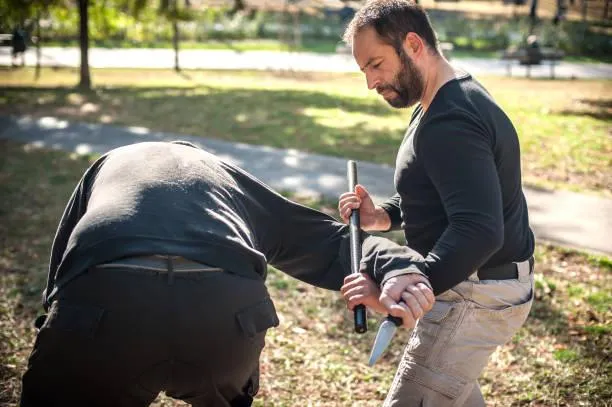
Stick and Knife Combatives
This comprehensive course offers a modern, combat-effective system of edged and impact weapon methods seamlessly integrating with empty-hand combatives. Drawing from Filipino martial arts (FMA), military combatives, and law enforcement defensive tactics, the course trains participants in the essential skills to fight with and against sticks and knives in real-world engagements. Through structured progression, students will learn to read, measure, manipulate timing, control distance, and attack from multiple angles across all fighting ranges—including striking, trapping, clinching, and ground engagement. The course strongly emphasizes weapon-to-weapon, weapon-versus-empty-hand, and transition drills to ensure readiness in chaotic, high-stress encounters.
Weapon Attributes, Characteristics, and Handling.
Weapon Ranges, Spatial Control, Closing, and Creating Distance Safely.
Timing and Counter-Timing, Intercepting, Evading, and Disrupting Attacks.
Trapping, Limb Control, Immobilization, Deflections, Checks, Parries, and Disarms.
Weapon Retention, Transfers, and Transitions Between Stick, Knife, and Empty Hands.
Rapid Assault Tactics (RAT)
Rapid Assault Tactics (RAT) is a combative course based on Contemporary Jeet Kune Do principles, which Paul Vunak developed and taught for special operations and law enforcement units. This battle-proven system is designed to end a violent encounter in seconds through a sequence of overwhelming aggression using the core tactical triad of Entry, Pressure, and Termination.
Principles of Entry, Pressure, and Termination
Bridging the Gap and Closing Distance
Effective Striking Techniques
Ground Defense and Recovery Tactics
Legal and Ethical Considerations
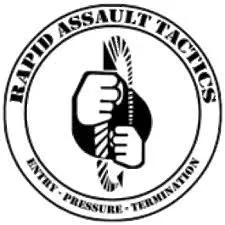

Self Defense for Women
This dynamic and reality-based course is tailored specifically for female participants seeking effective, no-nonsense protection strategies. The course emphasizes "Escape to Gain Safety"—a tactical mindset that trains women to disable an attacker using quick, aggressive strikes to the most vulnerable areas of the human body: the eyes, throat, groin, and shin.
“Escape to Gain Safety” Mindset
Vital Target Focus
Hand Strikes and Elbows
Low-Line Kicks and Knees
Clinch and Ground Escape Tactics

Fight Theory
This course is designed to provide participants with the foundational theory and principles of armed and unarmed combatives, focusing on understanding practical applications for personal defense against violence. Participants will learn concepts of predatory violence, pre-attack behaviors, situational awareness, and how the body responds to threats as the basis for understanding effective tactics and techniques.
Situational Awareness and Pre-Attack Behaviors
Fighting Ranges and Angles of Attack
Timing and Distance Considerations.
Armed and Unarmed Combatives Concepts
Use-of-Force and Self-Defense Laws

Unarmed Combatives
This intensive course in unarmed combatives provides participants with a comprehensive foundation in practical, real-world hand-to-hand combat skills. The curriculum blends fundamental theory with dynamic application across all combat ranges. Students will develop awareness, adaptability, and the ability to transition seamlessly between fighting distances and tactics.
Fighting Measures, Distancing, Positioning, and Footwork.
Hand Strikes and Kicking
Armed and Unarmed Combatives Concepts.
Clinching and Ground Fighting

Stick and Knife Combatives
This comprehensive course offers a modern, combat-effective system of edged and impact weapon methods seamlessly integrating with empty-hand combatives. Drawing from Filipino martial arts (FMA), military combatives, and law enforcement defensive tactics, the course trains participants in the essential skills to fight with and against sticks and knives in real-world engagements. Through structured progression, students will learn to read, measure, manipulate timing, control distance, and attack from multiple angles across all fighting ranges—including striking, trapping, clinching, and ground engagement. The course strongly emphasizes weapon-to-weapon, weapon-versus-empty-hand, and transition drills to ensure readiness in chaotic, high-stress encounters.
Weapon Attributes, Characteristics, and Handling.
Weapon Ranges, Spatial Control, Closing, and Creating Distance Safely.
Timing and Counter-Timing, Intercepting, Evading, and Disrupting Attacks.
Trapping, Limb Control, Immobilization, Deflections, Checks, Parries, and Disarms.
Weapon Retention, Transfers, and Transitions Between Stick, Knife, and Empty Hands.
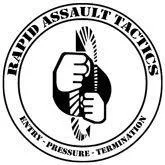
Rapid Assault Tactics (RAT)
Rapid Assault Tactics (RAT) is a combative course based on Contemporary Jeet Kune Do principles, which Paul Vunak developed and taught for special operations and law enforcement units. This battle-proven system is designed to end a violent encounter in seconds through a sequence of overwhelming aggression using the core tactical triad of Entry, Pressure, and Termination.
Principles of Entry, Pressure, and Termination
Bridging the Gap and Closing Distance
Effective Striking Techniques
Ground Defense and Recovery Tactics
Legal and Ethical Considerations

Self Defense for Women
This dynamic and reality-based course is tailored specifically for female participants seeking effective, no-nonsense protection strategies. The course emphasizes "Escape to Gain Safety"—a tactical mindset that trains women to disable an attacker using quick, aggressive strikes to the most vulnerable areas of the human body: the eyes, throat, groin, and shin.
“Escape to Gain Safety” Mindset
Vital Target Focus
Hand Strikes and Elbows
Low-Line Kicks and Knees
Clinch and Ground Escape Tactics
Firearms
Firearms
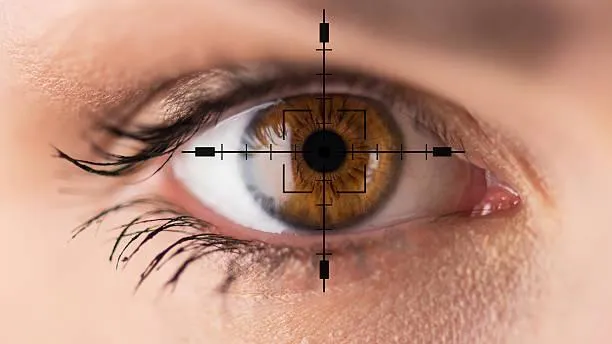
Gun Theory
This course provides participants with basic firearms safety, handling, marksmanship, and gunfighting theory and principles. It focuses on understanding practical applications for gun defense against lethal threats of violence. Participants will learn concepts of predatory violence, pre-attack behaviors, situational awareness, compliance, use of force, and how the body responds to threats as the basis for understanding effective tactics and techniques.
Predatory Violence and Pre-Attack Behaviors
Situational Awareness and the Cooper Color Code
OODA Loop and Action Versus Reaction
Gun Safety, Handling, Marksmanship, and Tactical Concepts
Legal and Ethical Considerations
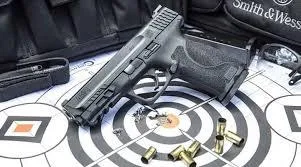
Pistol Marksmanship
The Pistol Marksmanship course is designed for individuals new to pistols or wanting to refresh their fundamental pistol skills. The course covers safety essentials, gun handling, basic shooting techniques, marksmanship, maintenance, storage, and building confidence in firearm use. This course qualifies for Missouri or Kansas concealed carry permits.
Gun Safety and Handling Procedures
Marksmanship Fundamentals
Essentials of Marksmanship
Shooting Positions and Techniques
Range Safety and Live-Fire Drills
Use-of-Force and Self-Defense Laws
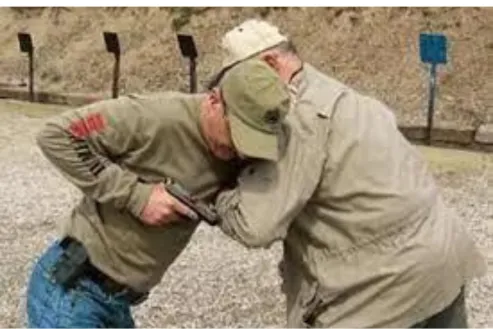
Pistol Gunfighting
The Pistol Gunfighting course is designed to introduce participants to proactive and reactive gunfighting techniques and tactics. This course goes beyond basic pistol handling and marksmanship and is designed for experienced shooters. Students will learn how to engage threats based on distance, angle, and timing considerations in close, medium, and distance encounters, based on who has the initiative.
Proactive Versus Reactive Gunfighting
Body Alarm Response
Gun Failure Management
Shooting on the Move
Practical Application Scenarios

Gun Theory
This course provides participants with basic firearms safety, handling, marksmanship, and gunfighting theory and principles. It focuses on understanding practical applications for gun defense against lethal threats of violence. Participants will learn concepts of predatory violence, pre-attack behaviors, situational awareness, compliance, use of force, and how the body responds to threats as the basis for understanding effective tactics and techniques.
Predatory Violence and Pre-Attack Behaviors
Situational Awareness and the Cooper Color Code
OODA Loop and Action Versus Reaction
Gun Safety, Handling, Marksmanship, and Tactical Concepts
Legal and Ethical Considerations
Pistol Marksmanship
The Pistol Marksmanship course is designed for individuals new to pistols or wanting to refresh their fundamental pistol skills. The course covers safety essentials, gun handling, basic shooting techniques, marksmanship, maintenance, storage, and building confidence in firearm use. This course qualifies for Missouri or Kansas concealed carry permits.
Gun Safety and Handling Procedures
Marksmanship Fundamentals
Shooting Positions and Techniques
Range Safety and Live-Fire Drills
Use-of-Force and Self-Defense Laws


Pistol Gunfighting
The Pistol Gunfighting course is designed to introduce participants to proactive and reactive gunfighting techniques and tactics. This course goes beyond basic pistol handling and marksmanship and is designed for experienced shooters. Students will learn how to engage threats based on distance, angle, and timing considerations in close, medium, and distance encounters, based on who has the initiative.
Proactive Versus Reactive Gunfighting
Body Alarm Response
Gun Failure Management
Shooting on the Move
Practical Application Scenarios
SECURITY AND LAW ENFORCEMENT
COURSES FOR
SECURITY AND LAW ENFORCEMENT

Tactical Negotiation
This course is a specialized communication and de-escalation training program for law enforcement officers, private security personnel, and tactical responders who encounter high-risk individuals in crisis or conflict. Drawing from the proven principles of hostage and crisis negotiation, crisis intervention techniques, and the Behavioral Influence Stairway Model (BISM) developed by the FBI, this course equips participants with practical tools to influence behavior, stabilize volatile situations, and resolve confrontations peacefully. Unlike traditional negotiation training, this course focuses on first responder and tactical-level negotiations in the field, where time is limited, conditions are chaotic, and the stakes are high. Whether facing emotionally disturbed persons, barricaded subjects, suicidal individuals, or hostile confrontations during patrol or security operations, participants will learn to apply structured communication strategies to gain control, reduce resistance, and enhance public and officer safety.
Foundations of Tactical Negotiation
Structured Verbal Containment with Subjects in Volatile or Escalating Situations.
Hostage Situations, Barricaded Subjects, Emotionally Disturbed Persons (EDPs), and Other Crisis Classifications.
Legal and Ethical Considerations
Realistic Scenario-Based Practice
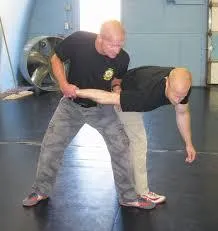
Defensive Tactics and Control Techniques
The course is designed to provide law enforcement officers, security professionals, and other public safety personnel with the skills and knowledge to control resistive and aggressive subjects safely and effectively. This hands-on course emphasizes real-world, legally defensible techniques that prioritize officer safety, subject control, proportional response, and the preservation of human life. Participants will learn and practice physical control skills, defensive countermeasures, takedowns, joint manipulation, and handcuffing procedures within constitutional use-of-force guidelines and agency policy. Scenario-based training reinforces decision-making, de-escalation, and articulation of actions taken.
Situational Awareness and De-escalation
Striking and Counterattack Techniques
Restraint and Control Methods
Legal and Ethical Considerations
Practical Scenarios and Case Studies
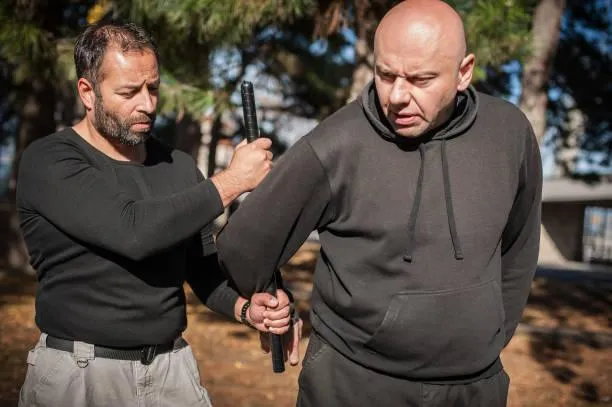
Integrated Baton
This course is designed to equip law enforcement officers and security professionals with the skills necessary to safely and effectively deploy a straight, expandable, or side-handle baton in the line of duty. The course integrates defensive tactics principles with use-of-force law, focusing on control, compliance, and subject safety. Training emphasizes appropriate baton use within the context of agency policy and legal standards, including the use-of-force continuum. Participants will learn how to carry, draw, strike, block, and retain the baton and transition between empty-hand techniques and other force options. Instruction also includes de-escalation, situational awareness, and report articulation for courtroom defense.
Legal and Policy Guidelines Governing Baton Use in Law Enforcement and Security Operations.
Proper Carry, Deployment, and Retention of Straight, Expandable, or Side-Handle Batons.
Baton Striking and Control Techniques
Integrate Baton Use with Verbal Commands, Control Tactics, and Situational De-escalation Strategies.
Practical Application Scenarios
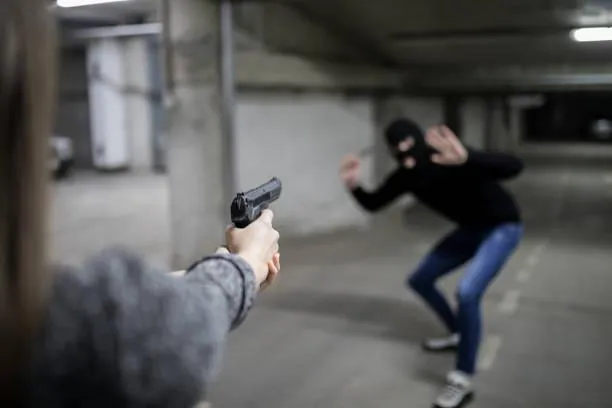
Gun and Knife Interface Encounters
This course is an advanced defensive tactics program designed to prepare law enforcement officers and security professionals to respond effectively to close-quarters encounters involving edged weapons and firearms. It addresses the unique challenges posed by sudden assaults, rapid escalation, and limited reaction time during lethal force confrontations. Training integrates principles from firearms tactics, edged-weapon defense, and empty-hand combatives to enhance survivability in ambush or close-contact scenarios. Emphasis is placed on threat recognition, weapon retention and disarmament, transitioning between force options, and decision-making under stress. This hands-on course includes scenario-based drills that simulate realistic attacks and force-on-force encounters.
Understanding Threat Dynamics
Firearm and Knife Transfer and Transition Techniques
Countering Knife Attacks
Weapon Retention and Disarming
Practical Application Scenarios
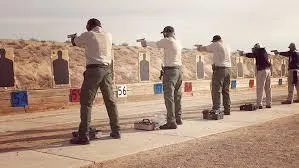
NRA Law Enforcement Handgun
The NRA Law Enforcement Handgun Training Course is a comprehensive, operator-level firearms training program designed to enhance the handgun proficiency of sworn law enforcement officers and authorized armed professionals. This course emphasizes the safe, lawful, and effective use of duty and off-duty handguns in both structured qualification environments and dynamic, real-world scenarios.
Mastering Handgun Fundamentals
Enhanced Shooting Techniques for High-Stress Situations
Quick Target Acquisition and Response Drills
Tactical Reloading Procedures and Malfunction Management
Scenario-Based Training with Safety Emphasis
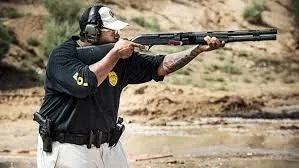
NRA Law Enforcement Shotgun
The NRA Law Enforcement Shotgun Training Course is a professionally structured, operator-level course designed to develop and enhance the tactical proficiency of sworn law enforcement officers in using the duty shotgun. This course focuses on practical applications of the shotgun as a versatile and effective tool for patrol, perimeter, and close-quarters situations. Participants will learn to deploy, operate, and maintain pump-action and semi-automatic shotguns with precision and confidence through classroom instruction and hands-on range training. Training includes proper carry conditions, ammunition selection, patterning, target discrimination, and tactical problem-solving under stress.
Shotgun Fundamentals and Safety
Patterning and Ammunition Selection
Shooting in Dynamic Environments
Shotgun to Handgun Transition Skills
Scenario-Based Tactical Drills
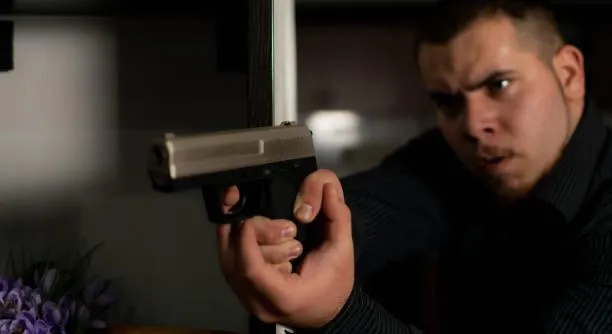
Active Killer Response
This course is a tactical and operational program designed to prepare law enforcement officers and security professionals to respond swiftly and effectively to active shooter incidents in various environments, including schools, businesses, public venues, and critical infrastructure sites. It focuses on rapid threat neutralization, team movement, incident command integration, and life-saving response under extreme stress. Participants will learn best practices for solo and team entry, tactical movement in confined spaces, room clearing, and threat engagement while coordinating with responding units and managing chaos at the scene. The course also emphasizes threat identification, communication, casualty care integration, and post-incident considerations such as securing the scene and preparing for investigation.
Active Killer Dynamics
Immediate Action Rapid Deployment
Tactical Movement and Room Clearing
Medical Triage and Rescue Operations
Scenario-Based Drills and Simulations
Tactical Negotiation
This course is a specialized communication and de-escalation training program for law enforcement officers, private security personnel, and tactical responders who encounter high-risk individuals in crisis or conflict. Drawing from the proven principles of hostage and crisis negotiation, crisis intervention techniques, and the Behavioral Influence Stairway Model (BISM) developed by the FBI, this course equips participants with practical tools to influence behavior, stabilize volatile situations, and resolve confrontations peacefully. Unlike traditional negotiation training, this course focuses on first responder and tactical-level negotiations in the field, where time is limited, conditions are chaotic, and the stakes are high. Whether facing emotionally disturbed persons, barricaded subjects, suicidal individuals, or hostile confrontations during patrol or security operations, participants will learn to apply structured communication strategies to gain control, reduce resistance, and enhance public and officer safety.
Foundations of Tactical Negotiation
Structured Verbal Containment with Subjects in Volatile or Escalating Situations.
Hostage Situations, Barricaded Subjects, Emotionally Disturbed Persons (EDPs), and Other Crisis Classifications.
Legal and Ethical Considerations
Realistic Scenario-Based Practice


Defensive Tactics and Control Techniques
The course is designed to provide law enforcement officers, security professionals, and other public safety personnel with the skills and knowledge to control resistive and aggressive subjects safely and effectively. This hands-on course emphasizes real-world, legally defensible techniques that prioritize officer safety, subject control, proportional response, and the preservation of human life. Participants will learn and practice physical control skills, defensive countermeasures, takedowns, joint manipulation, and handcuffing procedures within constitutional use-of-force guidelines and agency policy. Scenario-based training reinforces decision-making, de-escalation, and articulation of actions taken.
Situational Awareness and De-escalation
Striking and Counterattack Techniques
Restraint and Control Methods
Legal and Ethical Considerations
Practical Scenarios and Case Studies
Integrated Baton
This course is designed to equip law enforcement officers and security professionals with the skills necessary to safely and effectively deploy a straight, expandable, or side-handle baton in the line of duty. The course integrates defensive tactics principles with use-of-force law, focusing on control, compliance, and subject safety. Training emphasizes appropriate baton use within the context of agency policy and legal standards, including the use-of-force continuum. Participants will learn how to carry, draw, strike, block, and retain the baton and transition between empty-hand techniques and other force options. Instruction also includes de-escalation, situational awareness, and report articulation for courtroom defense.
Legal and Policy Guidelines Governing Baton Use in Law Enforcement and Security Operations.
Proper Carry, Deployment, and Retention of Straight, Expandable, or Side-Handle Batons.
Baton Striking and Control Techniques
Integrate Baton Use with Verbal Commands, Control Tactics, and Situational De-escalation Strategies.
Practical Application Scenarios


Gun and Knife Interface Encounters
This course is an advanced defensive tactics program designed to prepare law enforcement officers and security professionals to respond effectively to close-quarters encounters involving edged weapons and firearms. It addresses the unique challenges posed by sudden assaults, rapid escalation, and limited reaction time during lethal force confrontations. Training integrates principles from firearms tactics, edged-weapon defense, and empty-hand combatives to enhance survivability in ambush or close-contact scenarios. Emphasis is placed on threat recognition, weapon retention and disarmament, transitioning between force options, and decision-making under stress. This hands-on course includes scenario-based drills that simulate realistic attacks and force-on-force encounters.
Understanding Threat Dynamics
Firearm and Knife Transfer and Transition Techniques
Countering Knife Attacks
Weapon Retention and Disarming
Practical Application Scenarios
NRA Law Enforcement Handgun
The NRA Law Enforcement Handgun Training Course is a comprehensive, operator-level firearms training program designed to enhance the handgun proficiency of sworn law enforcement officers and authorized armed professionals. This course emphasizes the safe, lawful, and effective use of duty and off-duty handguns in both structured qualification environments and dynamic, real-world scenarios.
Mastering Handgun Fundamentals
Enhanced Shooting Techniques for High-Stress Situations
Quick Target Acquisition and Response Drills
Tactical Reloading Procedures and Malfunction Management
Scenario-Based Training with Safety Emphasis

NRA Law Enforcement Shotgun
The NRA Law Enforcement Shotgun Training Course is a professionally structured, operator-level course designed to develop and enhance the tactical proficiency of sworn law enforcement officers in using the duty shotgun. This course focuses on practical applications of the shotgun as a versatile and effective tool for patrol, perimeter, and close-quarters situations. Participants will learn to deploy, operate, and maintain pump-action and semi-automatic shotguns with precision and confidence through classroom instruction and hands-on range training. Training includes proper carry conditions, ammunition selection, patterning, target discrimination, and tactical problem-solving under stress.
Shotgun Fundamentals and Safety
Patterning and Ammunition Selection
Shooting in Dynamic Environments
Shotgun to Handgun Transition Skills
Scenario-Based Tactical Drills


Active Killer Response
This course is a tactical and operational program designed to prepare law enforcement officers and security professionals to respond swiftly and effectively to active shooter incidents in various environments, including schools, businesses, public venues, and critical infrastructure sites. It focuses on rapid threat neutralization, team movement, incident command integration, and life-saving response under extreme stress. Participants will learn best practices for solo and team entry, tactical movement in confined spaces, room clearing, and threat engagement while coordinating with responding units and managing chaos at the scene. The course also emphasizes threat identification, communication, casualty care integration, and post-incident considerations such as securing the scene and preparing for investigation.
Active Killer Dynamics
Immediate Action Rapid Deployment
Tactical Movement and Room Clearing
Medical Triage and Rescue Operations
Scenario-Based Drills and Simulations
INSTRUCTOR CERTIFICATION COURSES
INSTRUCTOR CERTIFICATION COURSES
NRA Pistol Instructor
This nationally recognized training program is designed to certify individuals to teach the NRA Basics of Pistol Shooting Course. It equips prospective instructors with the knowledge, skills, and attitudes necessary to effectively instruct students in the safe and responsible use of pistols. Candidates will learn to deliver structured lessons, supervise live-fire exercises, and evaluate student performance per NRA training standards. The course combines classroom instruction with range work and emphasizes the fundamentals of adult learning, instructional methodology, firearms safety, and proper shooting techniques.
Curriculum and Teaching Methodology
Marksmanship Fundamentals
Range Safety and Management
Student Engagement
Live Fire Drills and Qualification
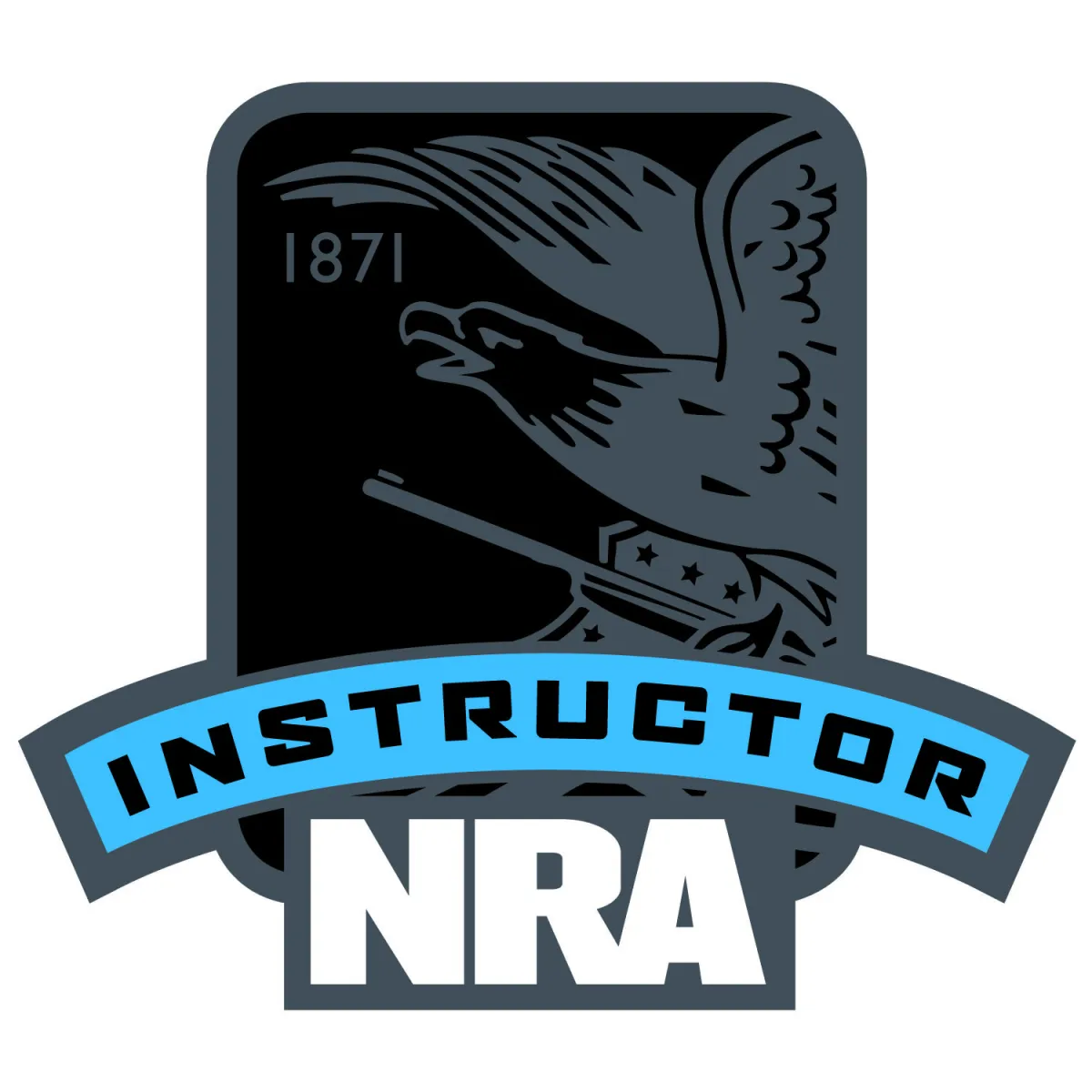
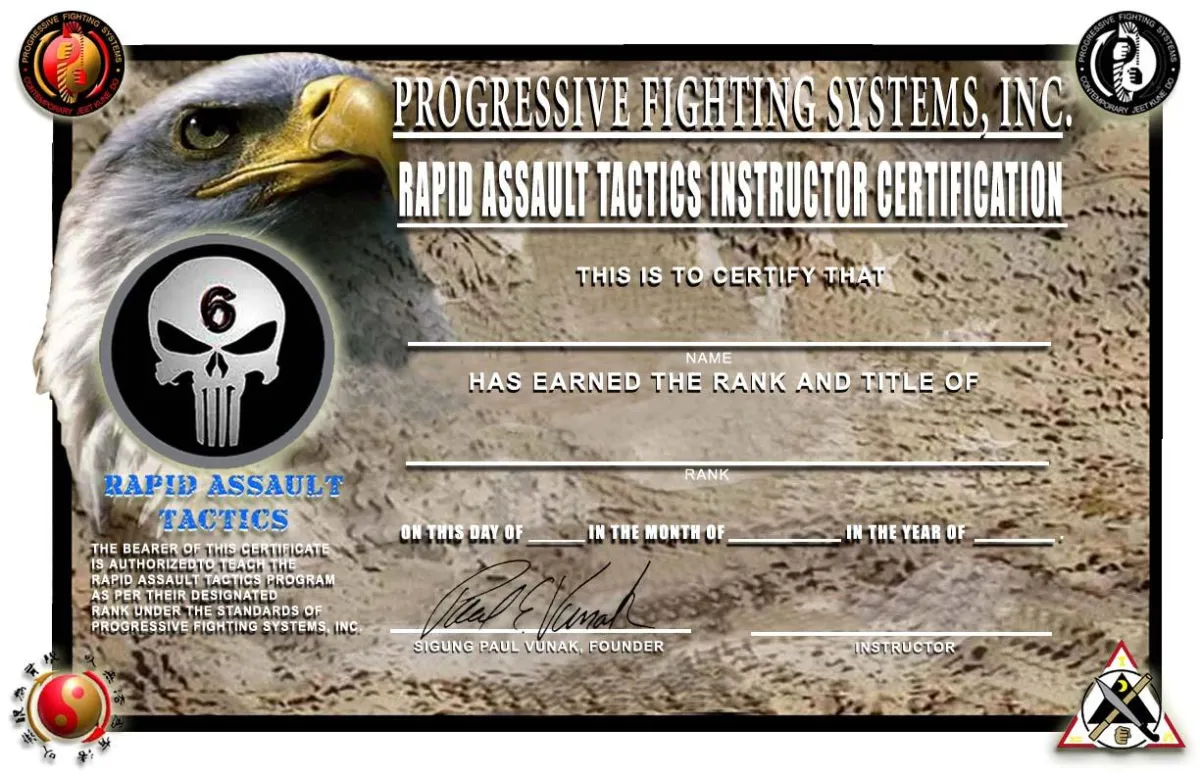
Rapid Assault Tactics (RAT) Instructor
This course is an advanced-level instructor development program based on the battle-proven Contemporary Jeet Kune Do system developed by Paul Vunak for U.S. military special operations and law enforcement units. It is designed to certify competent practitioners as instructors capable of teaching the RAT method to law enforcement, security professionals, and combative students in high-threat environments. RAT focuses on ending violent encounters within seconds through the systematic application of overwhelming aggression using the core tactical triad of Entry, Pressure, and Termination. The instructor course goes beyond skill execution and includes instructional methodology, scenario integration, student safety, legal articulation, and progressive training strategies. Participants will be taught how to teach, demonstrate, correct, and evaluate high-percentage gross motor techniques that perform reliably under duress. Emphasis is placed on developing an offensive mindset, integrating scenario-based learning, and fostering student confidence and survivability. Upon successfully completing all performance evaluations, teaching practicums, and written assessments, participants will receive a Rapid Assault Tactics Instructor Certificate that is valid for three years.
Mastery of RAT Core Principles: Entry, Pressure, and Termination.
Weaponizing Gross Motor Movements Under High Stress Conditions.
Safety Protocols and Class Control.
Instilling an Offensive Mindset While Reinforcing Legal, Ethical, and Tactical Decision Making.
Instructor Development
Tactical Conflict Resolution (TCR) Instructor
This course is a comprehensive train-the-trainer program that certifies instructors to teach the TCR personal protection system—an all-encompassing methodology grounded in the integrated domains of Talk, Fight, Shoot, and Move. Designed for professionals responsible for training others in conflict management and personal protection, this course equips instructors with the knowledge, instructional methodology, and tactical proficiency to deliver legally sound, real-world training across the force spectrum. Instructor candidates will learn how to teach verbal de-escalation, unarmed defensive tactics, firearms response, and tactical movement in a progressive, layered format that emphasizes context, safety, adaptability, and legal defensibility. Instructors will also be trained in lesson plan development, student assessment, scenario management, and safety protocols necessary for high-liability instruction. Upon completing all practical evaluations, teach-backs, written assessments, and safety requirements, candidates will be awarded the Certified Tactical Conflict Resolution Instructor Credential valid for three years. Recertification and advanced modules are available.
Talk – Instruction in Verbal De-escalation and Psychological Influence
Fight – Instruction in Defensive Tactics and Combatives
Shoot – Instruction in Defensive Firearms Use
Move – Instruction in Tactical Movement and Positioning
Instructor Development
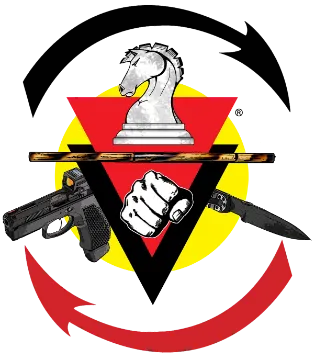

Tactical Conflict Resolution (TCR) Instructor
This course is a comprehensive train-the-trainer program that certifies instructors to teach the TCR personal protection system—an all-encompassing methodology grounded in the integrated pillars of Talk, Fight, Shoot, and Move. Designed for professionals responsible for training others in conflict management and personal protection, this course equips instructors with the knowledge, instructional methodology, and tactical proficiency to deliver legally sound, real-world training across the force spectrum. Instructor candidates will learn how to teach verbal de-escalation, unarmed defensive tactics, firearms response, and tactical movement in a progressive, layered format that emphasizes context, safety, adaptability, and legal defensibility. Instructors will also be trained in lesson plan development, student assessment, scenario management, and safety protocols necessary for high-liability instruction. Upon completing all practical evaluations, teach-backs, written assessments, and safety requirements, candidates will be awarded the Certified Tactical Conflict Resolution Instructor Credential valid for three years. Recertification and advanced modules are available.
Talk – Instruction in Verbal De-escalation and Psychological Influence
Fight – Instruction in Defensive Tactics and Combatives
Shoot – Instruction in Defensive Firearms Use
Move – Instruction in Tactical Movement and Positioning
Instructor Development

Rapid Assault Tactics (RAT) Instructor
This course is an advanced-level instructor development program based on the battle-proven Contemporary Jeet Kune Do system developed by Paul Vunak for U.S. military special operations and law enforcement units. It is designed to certify competent practitioners as instructors capable of teaching the RAT method to law enforcement, security professionals, and combative students in high-threat environments. RAT focuses on ending violent encounters within seconds through the systematic application of overwhelming aggression using the core tactical triad of Entry, Pressure, and Termination. The instructor course goes beyond skill execution and includes instructional methodology, scenario integration, student safety, legal articulation, and progressive training strategies. Participants will be taught how to teach, demonstrate, correct, and evaluate high-percentage gross motor techniques that perform reliably under duress. Emphasis is placed on developing an offensive mindset, integrating scenario-based learning, and fostering student confidence and survivability. Upon successfully completing all performance evaluations, teaching practicums, and written assessments, participants will receive a Rapid Assault Tactics Instructor Certificate that is valid for three years.
Mastery of RAT Core Principles: Entry, Pressure, and Termination.
Weaponizing Gross Motor Movements Under High Stress Conditions.
Safety Protocols and Class Control.
Instilling an Offensive Mindset While Reinforcing Legal, Ethical, and Tactical Decision Making.
Instructor Development

NRA Pistol Instructor
This nationally recognized training program is designed to certify individuals to teach the NRA Basics of Pistol Shooting Course. It equips prospective instructors with the knowledge, skills, and attitudes necessary to effectively instruct students in the safe and responsible use of pistols. Candidates will learn to deliver structured lessons, supervise live-fire exercises, and evaluate student performance per NRA training standards. The course combines classroom instruction with range work and emphasizes the fundamentals of adult learning, instructional methodology, firearms safety, and proper shooting techniques.
Curriculum and Teaching Methodology
Marksmanship Fundamentals
Range Safety and Management
Student Engagement
Live Fire Drills and Qualification

